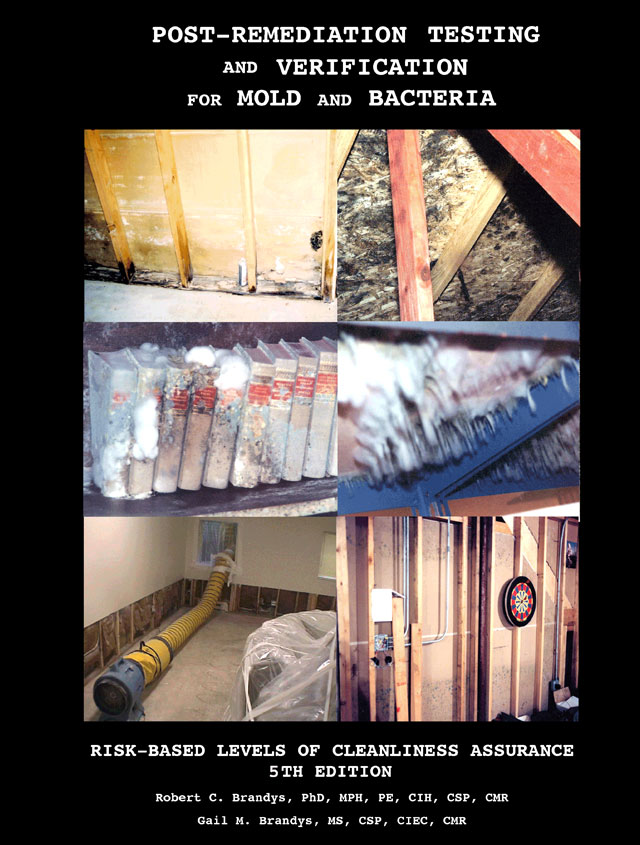|
|
|
|
|
| |
|
|
|
|
Post-Remediation Testing and Verification for Mold and Bacteria 5th Edition NOW AVAILABLE ONLY AS A DIGITAL EBOOK
There are Post-Remediation Testing and Verification Standards and Guidelines Post-Remediation Testing and Verification is recommended by 4 Governmental Agencies and 5 different trade organizations. - What
are the 10 steps of Post-Remediation Testing and Verification? All of these questions and more are answered in over 110 peer reviewed pages on Post-Remediation Verification The Development of this Document The mold remediation industry has been seeking some consensus on how to document that a mold remediation project is completed. Six different trade organizations have developed standards and guidelines to assist the mold/water damage remediation industry. However, a comprehensive document that deals with the various sizes of projects, levels of contamination, health risk level of the building occupants, the type and use of the building and specific protocols and comparative standards has been lacking until now. After making a presentation about Worldwide Mold Exposure Standards at IAQA/NAFA 2004, a number of attendees stated that they would like to see a similar document address the many unclear issues regarding Post-Remediation Verification. A number of people expressed interest in helping work on such a document. Given the interest by the IAQA members, Bob and Gail Brandys, of Occupational & Environmental Health Consulting Services (OEHCS), decided to assemble a team of contributing authors and reviewers to develop such a document. Mold and bacteria remediation crosses over many disciplines - engineering, architecture, building science, biology, physics, chemistry, mathematics, politics, communications, restoration, risk management, insurance and others. Consequently, selecting a team that has broad experiences essential in producing a comprehensive document. Each person has their own perception of reality based on their experience. The challenge was to take everyone's experience and define a reality that is reasonable, understandable and effective for the end users. The team reflected the different backgrounds, experiences and disciplines in the mold remediation industry. This included many IEPs from the US and Canada, mold analysis laboratories, mycology experts, quality control, insurance and remediation contractors. This review and editing team represented more than 400 years of real world experience! They and their companies are recognized as major contributors to the evolution of the art and science of mold remediation. The team members addressed each Post-Remediation Verification issue with challenging interpretations and provided useful details to make the information consistent, realistic and understandable. Over 30 real world "Field Examples" are provided to illustrate the application and understanding of specific concepts. The result was a book that is more than 150 pages long and contain over 100 useful references! View Detailed Table of Contents
OEHCS, Inc. is a multidisciplinary
consulting firm that, for more than 30 years, has specialized in
the application and transfer of technology and standards across
various industries. |
|
|
|
